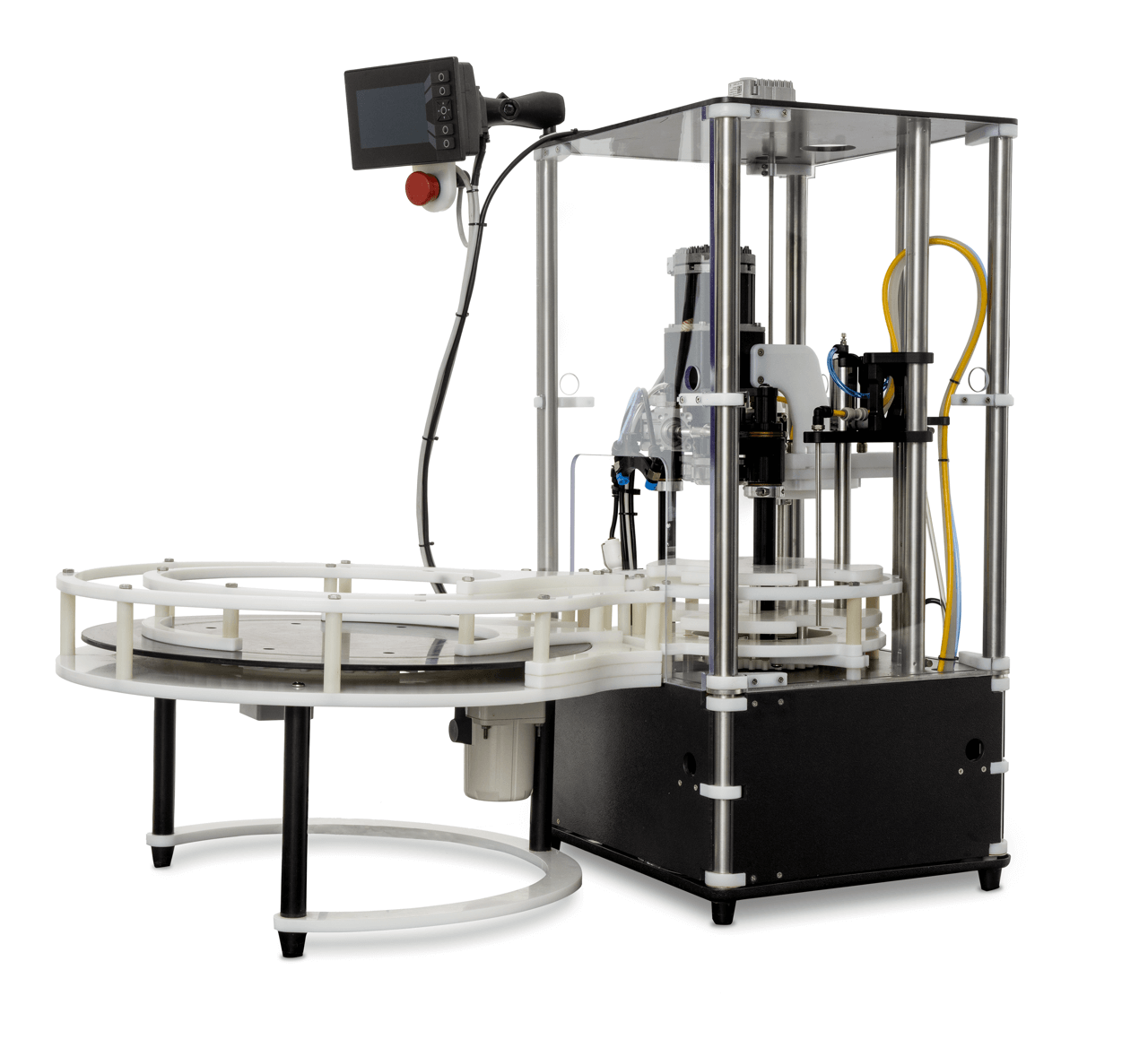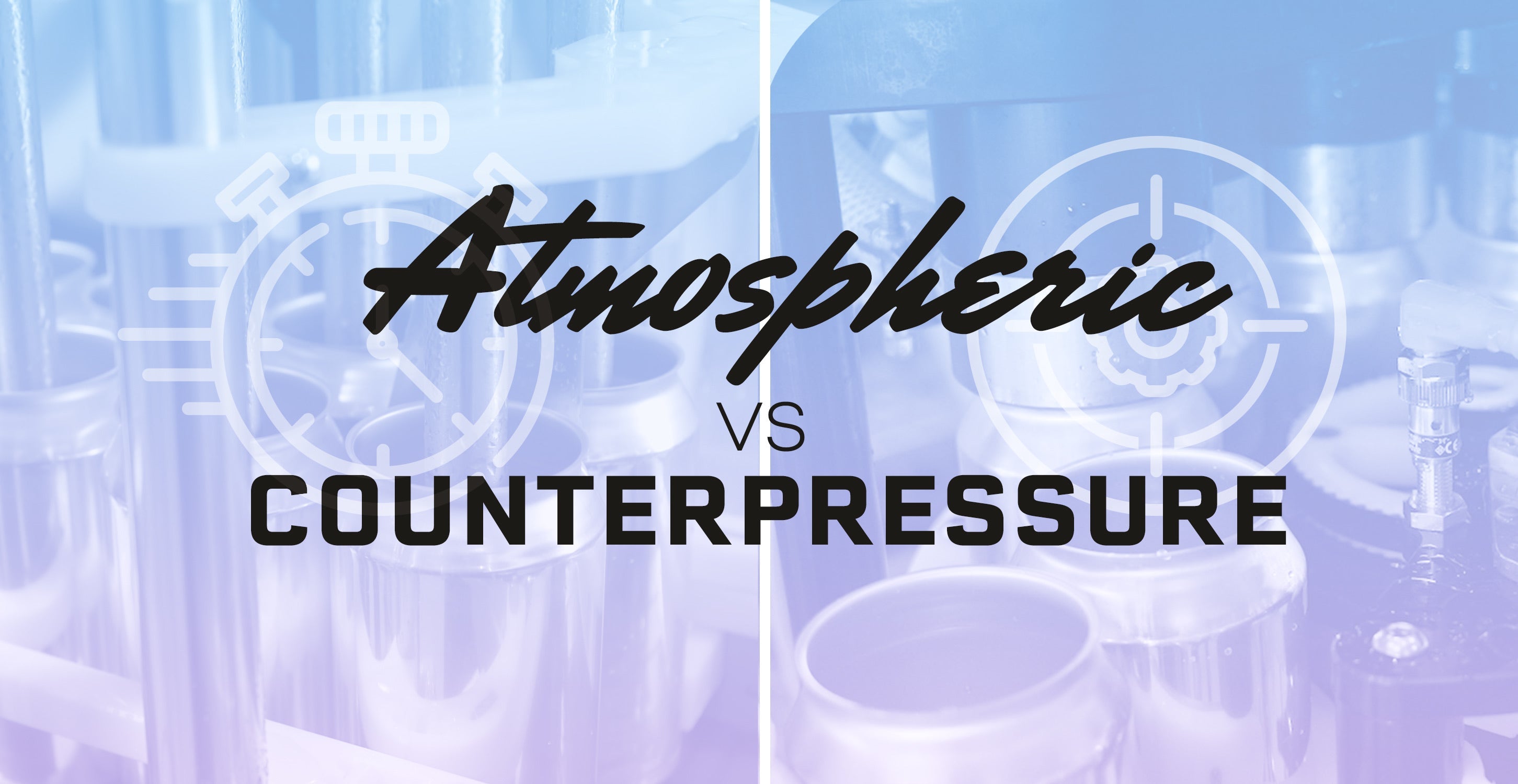The Art and Science of Canning: Atmospheric vs Counterpressure Filling
In beverage packaging no decision is more critical than deciding which equipment to buy. Explore key differences in atmospheric and counterpressure can filling machines. Learn about each machine's unique features, the...
Beverage producers are faced with many questions when deciding how to can their products. Everything from the size and format of the can to the can-lining to the design is important, but no decision is more expensive (in the short term) than deciding which can-filling machine to buy.
We wish we could say it’s a simple decision, but there are several factors that go into deciding between machines. Not only do you need to know the size, throughput, footprint, capabilities, and control that’s right for your business, you’ve got to determine which type of fill method works best for your intended products.
In this article we’ll explore atmospheric and counterpressure filling systems, what makes each machine unique, what types of beverages are best for each one, and which American Canning Machines fit different brand needs and sizes.
As you read, if you have questions, feel free to reach out to a member of our sales team at sales@canwithacm.com or give us a call 512.355.0100.
Atmospheric Can Filling
Simply put, atmospheric fillers fill cans that are open to and at the pressure of the surrounding atmosphere. Atmospheric filling machines typically work by using CO2 to push liquid from a pressurized tank and through a fill head positioned toward the bottom of the open can to allows for a more controlled and gentle flow. A combination of valves and flow restrictors balance the flow rate and depressurization rate. This allows users to fill without excess foam and breakout, that otherwise would result in low-fills and product loss.
Since a can is not sealed until after it is filled, the internal pressure of the can can’t be changed during filling. This means that an atmospheric machine works best when product temperature and carbonation are easily controlled and within acceptable parameters for the machine.
The simplicity of this type of filling system has its limitations, but it also has significant benefits. Namely, speed. Atmospheric filling machines work much faster per fill head than counter pressure machines and typically use less CO2, compressed air, electricity, and water.
The primary risk of atmospheric filling is product waste due to the limited control in the filling cycle. An experienced operator will cut down on these issues, but for those less experienced, the learning curve can be steep. Atmospheric filling machines typically lack precise digital controls so becoming a great operator often requires a “feel” for the machine that is developed through repetition. This can lead to a long period of training and significant product waste, especially at the beginning.
As those in the industry often say, there is both art and science involved in the brewing process. Packaging is much the same. An atmospheric machine is often better for operators who fashion themselves as artisans versus those who desire the precision of a scientist.
It’s common for producers to start with an atmospheric machine, and move to a larger counter pressure machine as they grow and need to scale and maintain quality.
Atmospheric fillers are often available in smaller and more budget-friendly configurations than counter pressure fillers. This has caused atmospheric filliers to explode in popularity in the last decade, largely supported by the growth of craft beer.
Counter pressure Machines
Counter pressure (or isobaric) filling machines pressurize the container before filling with liquid. This pressurized environment is created using a gas, such as carbon dioxide or nitrogen.
Since these sealed and pressurized containers allow for precise control of the environment (unlike atmospheric filling), they are particularly well suited for liquids otherwise prone to excessive foaming and CO2 breakout during filling, including products that are too warm or highly carbonated to be effectively packaged with atmospheric systems. For these challenging beverages, counter pressure filling often leads to significantly less product loss and ensures better and more consistent quality.
A counter pressure machine is very flexible; pretty much all liquids work with these machines. However, due to the fact that each container must be sealed, pressurized, and depressurized in addition to the filling, a counter pressure machine is slower than an atmospheric machine of a comparable size.
Counter pressure machines offer greater precision than atmospheric machines, but their controls can be harder to grasp initially. Unlike atmospheric machines, which rely on the operator's developed "feel," counter pressure machines may pose a steeper learning curve for those without technical experience.
While the atmospheric machine is for the “artisan” who appreciates the art of beverage canning, the counter pressure machine is designed for the “scientist” who wants to tightly control every factor. For that reason, the fastest can fillers in the world are done with large, complex counter pressure filling machines.
Comparing the Machines
Here’s a quick breakdown of the most common metrics that differentiate atmospheric and counterpressure filling machines:

The easiest way to sum it up is that atmospheric filling = speed. Counterpressure filling = flexibility and control.
ACM’s Solutions
At American Canning Machines, we design canning systems to deliver reliability, efficiency, and ease of use for beverage producers of all sizes. Whether you’re packaging your first cans with the AT-1, scaling up with the AT-6, or expanding your product line with the CP-4, our machines are built to support any product and any level of operator experience.
With compact designs, intuitive controls, and proven performance, our machines make it easier to package quality products consistently—helping you focus on what you do best.
Atmospheric
American Canning’s atmospheric fillers provide professional-quality fills in compact, efficient designs tailored to the needs of beverage producers.
The AT-1 is perfect for entry-level packaging, offering the smallest footprint in the industry and requiring just a single operator. It’s an excellent choice for producers looking to start canning with minimal space and staffing needs while maintaining consistent, reliable results.
For breweries ready to scale, the AT-6 delivers unmatched flexibility and speed. With a dual-lane, 6-fill-head configuration, it can operate one lane at a time for smaller runs or both lanes simultaneously to achieve speeds of up to 60 cans per minute.
Both machines are designed with refined fill-head flow characteristics, precise controls, and intuitive interfaces, making it easier than ever to package your products efficiently and confidently.
Counter pressure
ACM's CP-4 counter pressure filler is designed to make precise, high-quality packaging accessible to all beverage producers.
Engineered with simplicity and efficiency in mind, the CP-4 features an intuitive digital interface that shortens the learning curve for operators, making it one of the easiest counter pressure machines on the market. This thoughtful design ensures consistent, repeatable results with minimal effort, even for teams with limited technical experience.

CP-4 Filler / Seamer
- Speed: 20-30 CPM
- Footprint: 55” x 20”
- Operators: 1-2
The CP-4 is the perfect solution for producers seeking precision and flexibility. It handles a wide range of beverage types—including high-carbonation and breakout-prone products—while minimizing product loss and maintaining consistent fills.
With the CP-4, even smaller producers can achieve professional-quality packaging without the complexity traditionally associated with counter pressure systems.

AT-6 Filler/Seamer
- Speed: 60+ CPM
- Operators: 2-3
- Dual lane packaging
The AT-6 might sound a little intimidating at first. With its ability to fill more than 60 cans per minute and its elevated sticker price, you might feel that the AT-6 is beyond your brewery’s current needs. Maybe that’s true, but it might be worth a closer look.
Due to its dual line capability, the AT-6 is actually the perfect machine to be with your brewery as you scale.
Say you currently fill 20-30 cans per minute, but you have plans to scale to 60 cans per minute within the next few years. You might be tempted to purchase a smaller machine instead of investing in more fill-heads, but in the long run you’ll end up purchasing two machines instead of just one. This costs not only money for the new machine, but implementation costs, employee hours, production disruptions, and having to navigate financing more than once. Combined, those potentially delay your ability to scale as quickly as needed.
The AT-6 is also compact, meaning that it takes up less floor space than most comparable machines.Your space doesn’t have to expand in order for your supply to scale and meet demand.
Invest in the Best Fit
Choosing the right canning machine is about aligning with your current needs while keeping an eye on future goals. Both atmospheric and counter pressure systems offer unique benefits, and ACM provides options tailored to fit your production scale, beverage type, and operational priorities.
Whether you’re just starting out and need the compact and reliable AT-1, scaling up with the flexible and high-speed AT-6, or seeking precision and versatility with the CP-4, our machines are designed to help you succeed.
Plus, with modular designs that integrate seamlessly with infeed and outfeed equipment, you can build a system that grows with your business.
Ready to find your best fit? Our machine sales team is here to help. Contact us at sales@canwithacm.com or call 512.355.0100 to get started.


